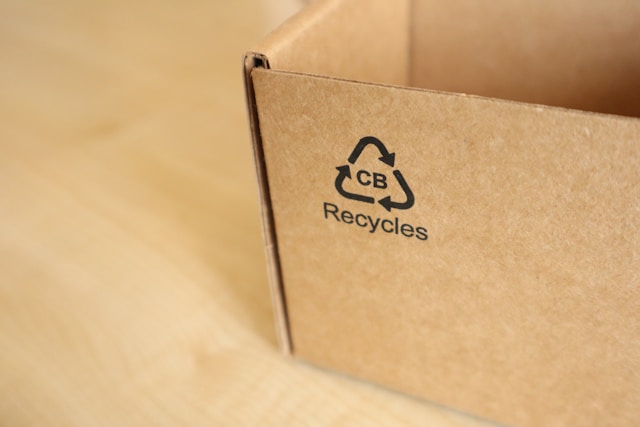
Home flipping is not just about profit margins but strategy, style, and sustainability. More investors today are integrating recycled and reclaimed materials into their home renovation projects. These options reduce environmental impact and add unique character to properties, which can be a selling point for eco-conscious buyers. Reclaimed wood, repurposed metal, salvaged bricks, and recycled glass are just a few examples of how old materials can find new purpose.
Beyond aesthetics, using such materials often aligns with green building certifications and local ordinances aimed at waste reduction. This can increase a flipped home’s appeal, value, and marketability. Moreover, sourcing sustainable materials can often lower renovation costs if done wisely. When home flippers opt for recycled content, they’re not only doing the planet a favor but making a business-savvy move.
As environmental awareness grows among homeowners and investors alike, these choices signal responsibility and modern design sense. More importantly, they help home flippers differentiate their projects in increasingly competitive markets. Integrating eco-friendly materials isn’t just a trend; it’s becoming an expectation.
Top Recycled and Reclaimed Materials Every Flipper Should Know
One of the most popular options for eco-conscious flippers is reclaimed wood. This material adds a rustic yet high-end charm to interiors and can be used for flooring, paneling, or custom furniture. It’s typically sourced from barns, factories, or old homes and has the added benefit of being well-seasoned and durable. Reclaimed wood looks great and performs well in high-traffic areas, making it ideal for long-term wear.
Recycled metal is another top-tier option, particularly in fixtures, roofing, and fencing. Aluminum and steel are frequently reused in construction, maintaining strength while reducing resource consumption. These metals are often available through salvage yards and specialized resellers. Their industrial appearance also complements modern or minimalist design schemes.
Salvaged bricks from demolitions or older buildings can bring rich texture and color to exterior and interior walls. Their weathered appearance contributes authenticity to remodels and helps maintain historical integrity in older neighborhoods. Similarly, recycled glass tiles are perfect for kitchen backsplashes and bathroom decor, offering vibrant color while diverting waste from landfills.
Lastly, composite materials from recycled plastics and wood fibers are gaining popularity. These are used for decking, outdoor furniture, and even siding. They are long-lasting, weather-resistant, and low-maintenance qualities that boost curb appeal and reduce post-sale maintenance worries.
Where and How to Source Sustainable Materials
Finding the right sources for recycled and reclaimed materials requires research, but it pays off in terms of quality and savings. Local salvage yards, architectural antiques stores, and construction waste recovery centers are goldmines for unique finds. Online marketplaces like Craigslist, Facebook Marketplace, and specialized platforms like PlanetReuse also offer access to affordable, reclaimed items.
Some flippers form partnerships with contractors or attend public demolition sales to claim materials before they’re discarded. This can yield doors, cabinets, beams, and other valuable items. Auctions and estate sales are also excellent places to spot vintage pieces that can be refurbished for modern use.
When sourcing, it’s important to inspect items thoroughly. Check for structural soundness, pest damage, or mold. Also, verify whether the material has been treated with harmful chemicals like lead paint or asbestos, especially in older homes. A good rule of thumb is to combine salvaged materials with modern safety standards, ensuring compliance without sacrificing character.
Storing and transporting these materials can be more demanding than purchasing new ones, but the effort can translate into higher ROI. Proper handling prevents damage and preserves their resale or aesthetic value. Also, consider hiring a contractor experienced in working with unconventional materials to avoid waste and complications during installation.
Boosting Value and Appeal with Reclaimed Style
Eco-friendly materials are more than just good PR—they influence buyer psychology. Many homebuyers are increasingly aware of their carbon footprint and are drawn to homes that reflect those values. Homes flipped with reclaimed materials often stand out visually and emotionally. A reclaimed wood accent wall or antique clawfoot tub isn’t just décor—it tells a story, creating an experience that new builds can’t replicate.
Green homes may also qualify for energy-efficient certifications or rebates, increasing overall value. These certifications appeal to residential buyers and real estate investors seeking sustainable assets. Features like recycled insulation, reused hardwood flooring, and low-VOC finishes enhance air quality and energy performance, which are key concerns for modern families.
Additionally, homes with visible signs of environmental consciousness tend to generate more buzz on listing sites. Real estate agents often spotlight eco-features in marketing materials, which can drive more traffic and offer higher conversion rates during showings. Visual contrast created by mixed materials—such as modern hardware with reclaimed shelving—produces an engaging balance of old and new.
Smart staging can further highlight these elements. For instance, showcasing a dining table made of reclaimed oak next to energy-efficient lighting fixtures paints a cohesive, sustainable lifestyle. Buyers are more likely to connect with spaces that feel curated and mindful—an impression that often closes deals faster.